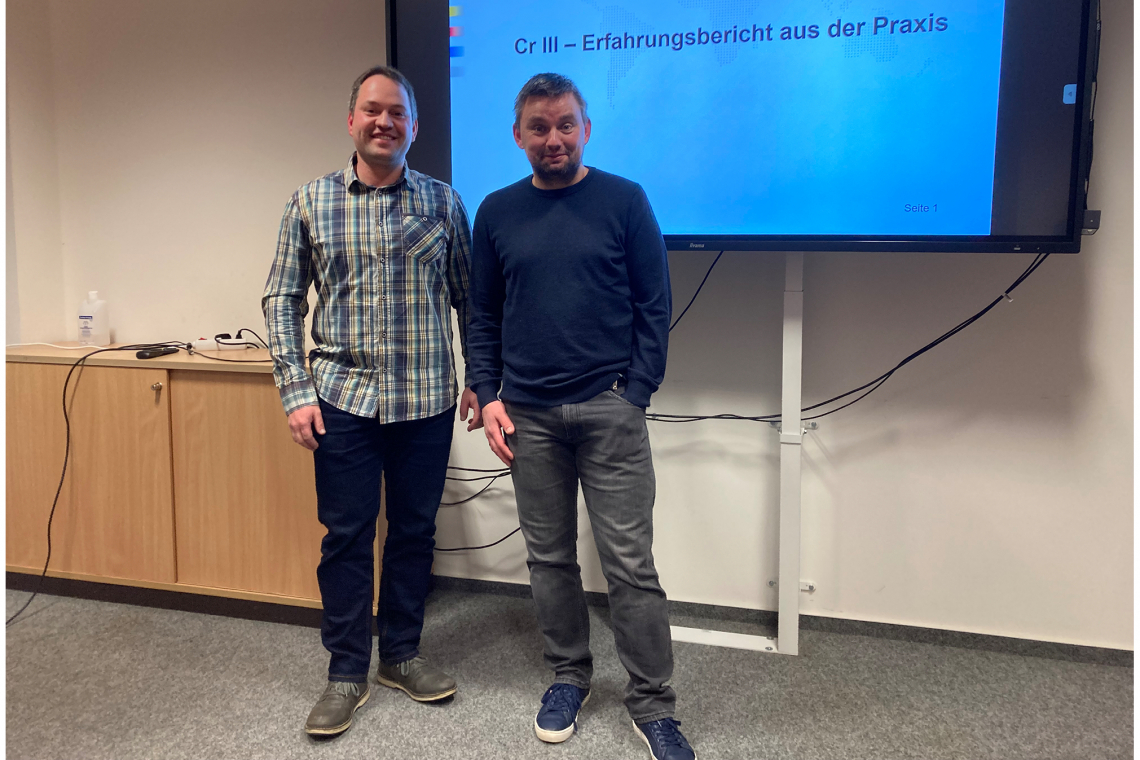The first event of the year organized by the DGO Thuringia district group met with great interest. Speaker Sascha Höland, Managing Partner of Spaleck Oberflächenveredlung GmbH, reported on the problems of introducing chromium(III) coatings in practice. In his experience so far, it has been a journey between anticipation and nervous breakdown.
The medium-sized company with around 55 employees uses rack technology to coat copper, nickel, chrome and gold. The company already has many years of experience and the necessary expertise in sophisticated mass finishing technology, its second mainstay. In 2020 and 2022, two electroplating systems were converted to a chromium(III) electrolyte. This required a great deal of logistical effort, as the new systems had to be integrated into the existing building structure.
The company A.S.T. Anlagenbau und Systemtechnik GmbH Gehren managed this within a short space of time. The software conversion and delivery of the electrolyte also took place in parallel with the conversions. The conversions and superstructures resulted in total investment costs of 340,000 euros. The multiple consultations with the electrolyte supplier of the chromium(III) electrolyte required a great deal of creativity in order to achieve stable working conditions. For example, the parts were not completely coated during matt depositions on the product carriers. Varying the current density, changing the rack material, arranging the parts and changing the anodes only brought temporary success. Even additional activation of the parts did not lead to a prolonged improvement in chrome deposition. Many of these changes were costly and did not result in stable working conditions. Through consultation with electrolyte suppliers and colleagues from industry and research, a certain stability in the handling of the chromium(III) electrolyte was achieved.
However, the speaker emphasized the unresolved problem of reliably measuring the thickness of such coatings. The various methods show very large deviations. For this reason, a working group was set up to measure the thickness of chromium layers deposited from chromium(III) electrolytes. Employees of the TU Ilmenau, Department of Electrochemistry and Electroplating, are also involved in this working group. This topic also played an important role in the lively discussion that followed.
Speaker Sascha Höland finally summarized on the subject of chromium(III) that chromium deposition from chromium(III) electrolytes is not yet fully developed and that such electrolytes still need to be further improved. At the same time, the coating thickness measurement must become more reliable and the customer group for chromium(III) coatings must become larger overall.
Mathias Fritz, DGO District Group Manager for Thuringia, thanked Sascha Höland for the practical report and wished the company management and its employees continued success in the future.


